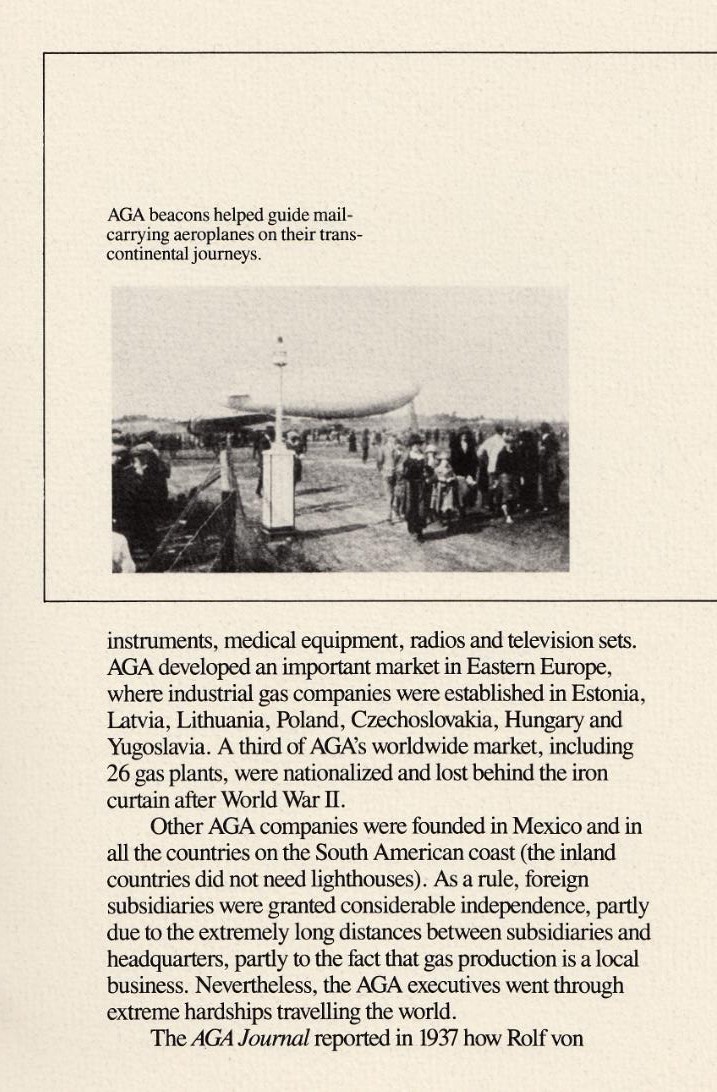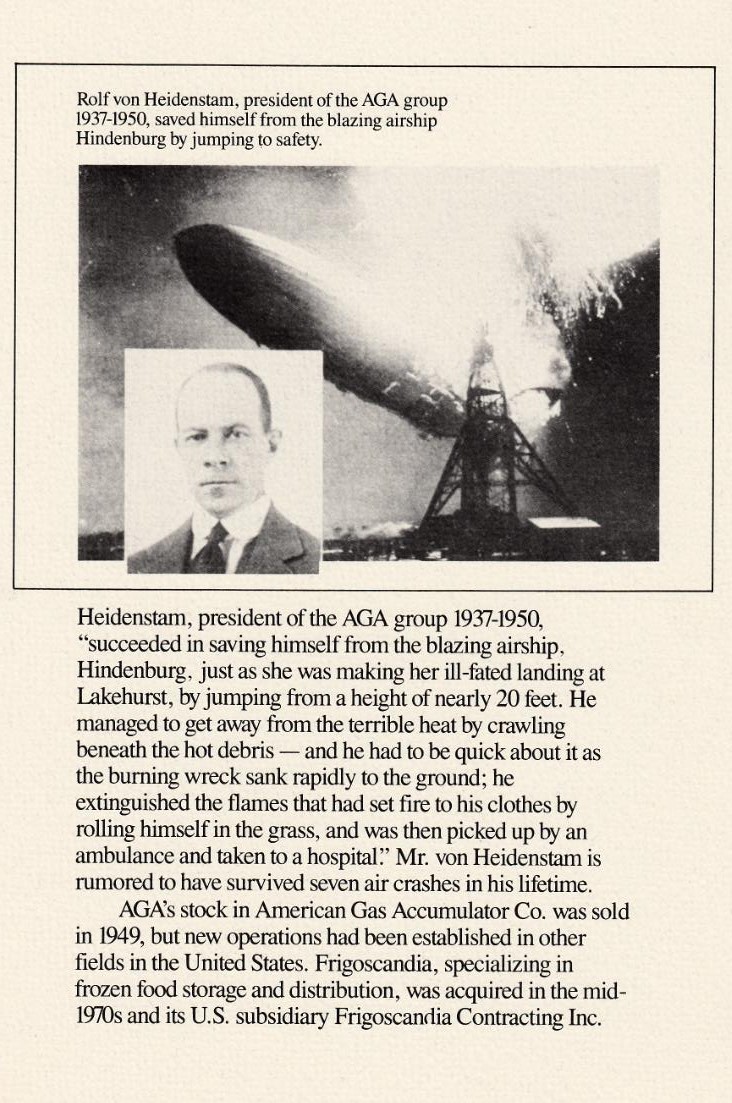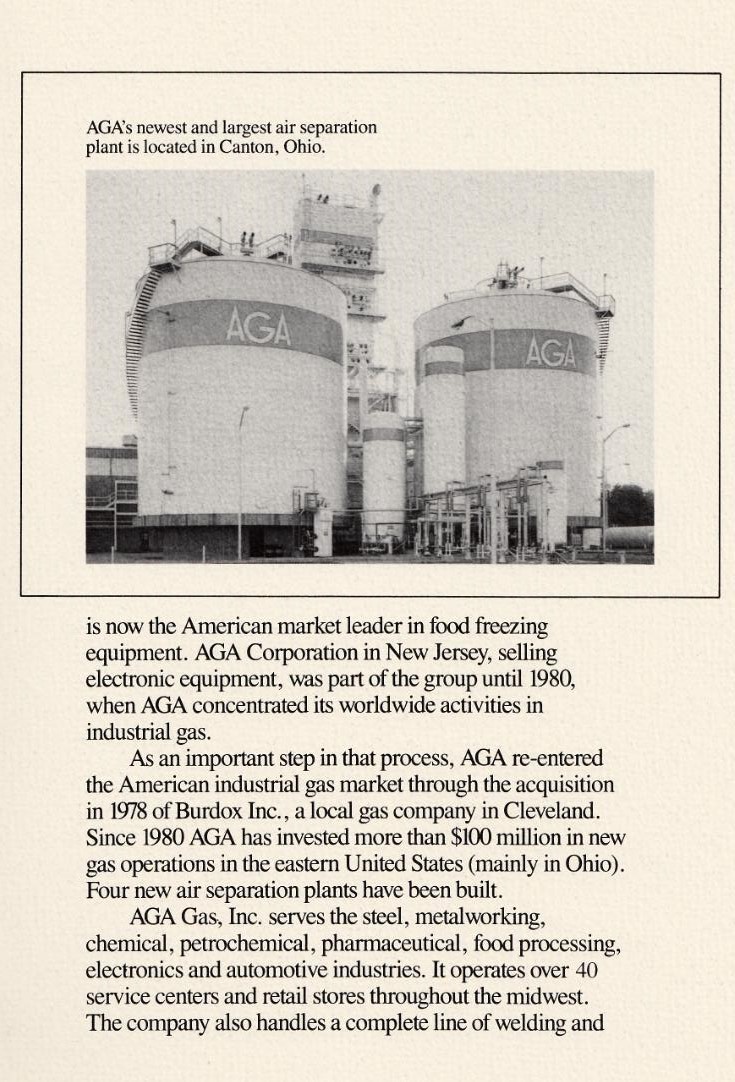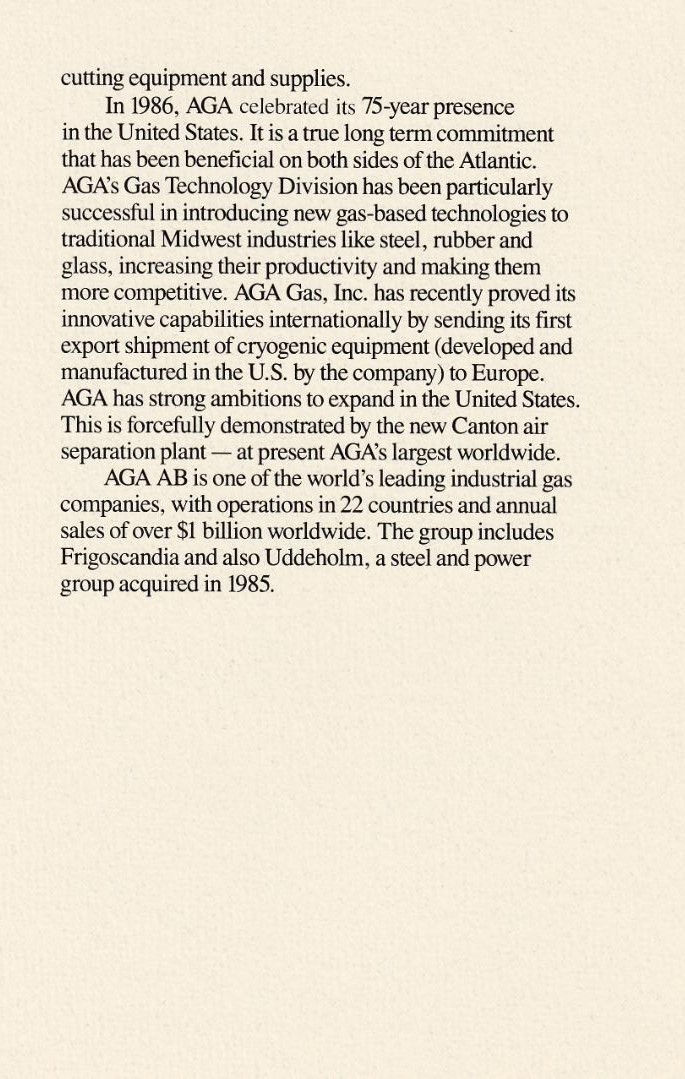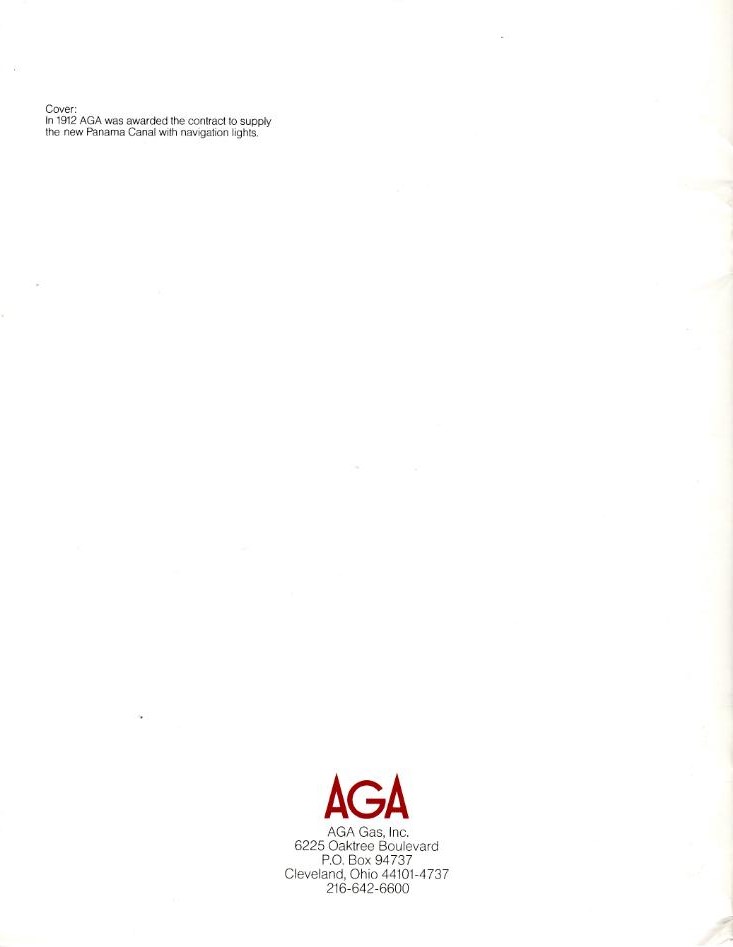The AGA Saga
from; van Dok, Utrecht

Lichting of Panama canal
9 september 1912

The AGA Saga
AGA started in the business as early as 1904, with
a small filling station for acetylene and a repair shop in the
vicinity of Stockholm, Sweden. The founder of the
company was a 35-year-old engineer, Gustaf Dalèn. He
was an ingenious inventor, and soon the business was
expanded and he started to manufacture railway lights and
acetylene production machinery.
The real breakthrough for the company came with an
automatic lighthouse mechanism. It included the sun valve
and the intermittent light regulator, invented in 1905, and
were the first innovations patented by AGA.
Lighthouses were few and very primitive at the time.
Ships were often stranded on rocky shores, and if ships
were guided along these shores it was often only by fires.
Sometimes wreckers lit other fires and purposely misled
ships. A major problem was how to transport wood or other
fuel to the remote locations where the lights were needed.
Acetylene, with its bright light, proved to be an excellent
fuel for lighthouses, but it was too expensive when burned
24 hours a day. The introduction of the AGA intermittent
light regulator reduced fuel consumption by 90 percent and
the sun valve cut fuel consumption by another four precent.
Lighthouses could now be operated at a low cost and left
unattended for long periods. The sun valve lit them
automatically at dusk and turned them off at dawn.
AGA lighthouses built in those days are still in
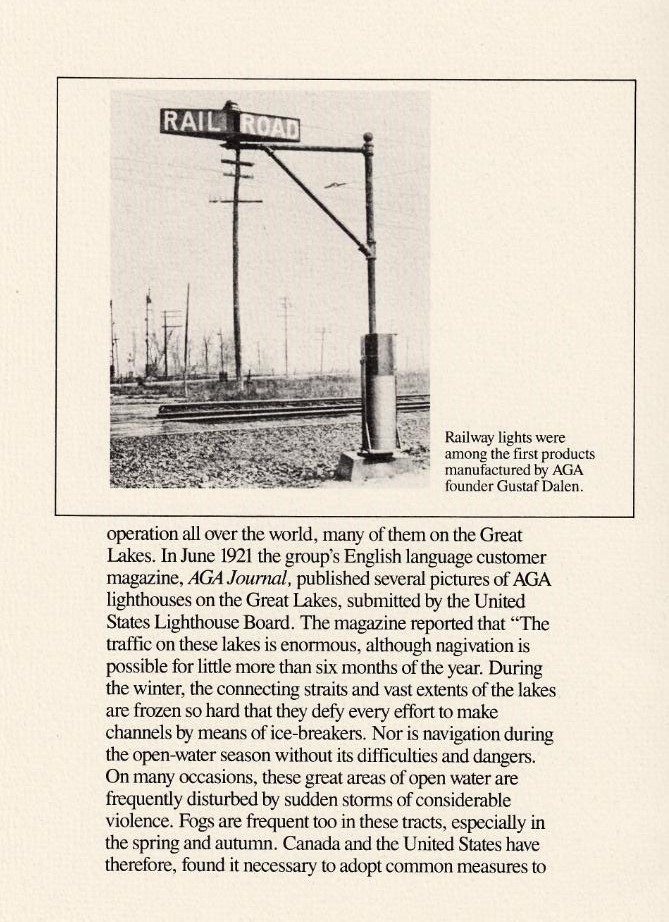
Railway lights were among the first productsmanufactured by AGA founder Gustaf Dalen.
operation all over the world, many of them on the Great
Lakes. In June 1925 the group`s English language customer
magazine, AGA Journal, published several pictures of AGA
lichthouses on the Great Lakes, submitted by the United
States Lighthouse Board. The magazine reported that “The
traffic on these lakes is enormous, although navigation is
possible for little more than six months of the year. During
the winter, the connecting straits and vast extents of the lakes
are frozen so hard that they defy every effort to make
channels by means of ice-breakers. Nor is navigation during
the open-water season without its difficulties and drangers.
On many occasions, these great areas op open water are
frequently disturbed by sudden storms of considerable
violence. Fogs are frequent too in these tracts, especially in
the spring and autumn. Canada and the United States have
therefore, found it necessary to adopt common measures to

Many of AGA`s
lighthouses built in the
early 1900`s, such as this
one on the Great Lakes, are
still in operation today.
ensure the safety og navigation by means of effective
lighting. There exist at presents no less than about 690 lights
within the United States section of these waters”.
In 1912 AGA won the contract to build a lighthouse
system for the Panama Canal and Gustaf Dalen was awarded
the Nobel Prize in physics for his inventions in lighthouse
technology. It was a year of triumph, but also of personal
tragedy for Gustaf Dalen. He was badly injured in a gas
explosioin while conducting an experiment to develop safer
gas cylinders. He was permanently blinding, but continued to
lead his company for 25 years until he died in 1937
AGA`s American saga started in 1911, when American
Gas Accumulator Co. was founded in New J
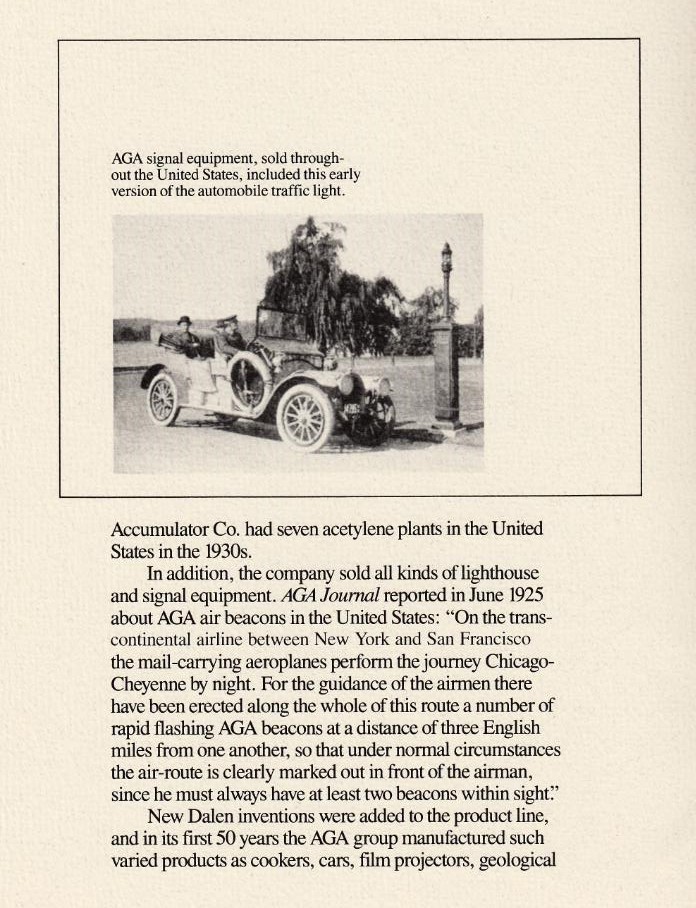
AGA signal equipment, sold through-
out the United States, included this eurly
version of the automobile traffec light.
Accumulator Co. had seven acetylene plants in the United
States in the 1930s.
In addition, the compagny sold all kinds of lighthouse
and signal equipment. AGA Journal reported in June 1925
about AGA air beacons in the United States: Ön the trans-
continental airline between New York and San Francisco
the mail-carrying aeroplanes perform the journey Chicago-
Cheyenne by night. For the guidance of the airmen there
have been erected along the whole of this route a number of
rapid flashing AGA beacons at a distance of three English
miles from one another, so that under normal circumstances
the air-route is clearly marked out in front of the airman,
since he must always have at least two beacons within sighr”.
New Dalen inventions were added to the product line,
and in its first 50 years the AGA group manufactured such
varied products as cookers, cars, film projectors, geological
